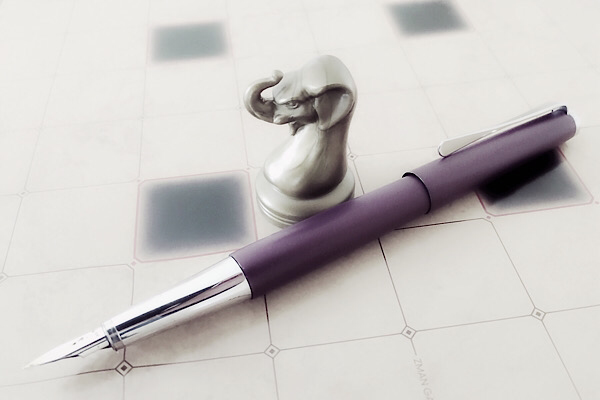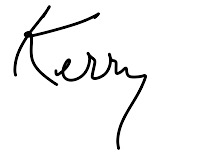Editorial
In this issue Cesco Reale offers another definition of "abstract game." While Cesco's discussion is interesting and important, I've been trying to argue differently: "Abstract" refers to something particular, the essence of a game, how the game is structured, aside from other meanings that might adhere to the game. Every game has an abstract structure. Other, incidental meanings that attach to a game are its "theme." You can have abstract structure without theme, but not theme without abstract structure. Luck or a deck of cards, for example, can belong to the abstract structure of a game. In other words, the purely abstract games are games without theme. Heavily thematic games can be interesting because of their abstract structure, no matter the theme. Cesco's approach is different and has equal validity on its own terms.
The abstract structure of the chess variants is easy to identify: two opposing armies start facing each other; each army contains pieces that are differentiated by their powers of movement; capture is by replacement; each side has a King; the objective of the game is to capture (or checkmate) the opposing King. This issue contains articles on the chess variants Shatranj, Sovereign Chess, Superschaak (i.e., Super Chess), Hostage Chess, and Chad and Shakti. Then three different chess variants are represented in this issue from the Games Design Competition: Andalusia, King's Colour, and Royal Guard. We just missed including an article on Thuria (i.e., Chessboard ) Jetan, but maybe nine chess variants is already enough for one issue!
Superschaak represents an attempt to generalize the possible board sizes, opposing armies, and starting positions. Effectively, Superschaak is not a single game but rather a large family of variants, and it is perhaps the most extensive attempt in this direction. The concept of chess, however, is broader even than Superschaak.
For example, Glinski's Hexagonal Chess is a chess game with a different geometry. The hexagons effectively increase movement capabilities by fifty percent. For example, the Queen in Chess has a maximum of eight directions of movement; the Queen in Hexagonal Chess has a maximum of twelve. This is the key distinction between the two games, and it gives the hexagonal game quite a different flavour. Glinski's game is still played competitively in Hungary, and we reviewed Glinski's book First Theories of Hexagonal Chess in AG7. We intend to start further coverage of Glinski's beautiful game in the next issue.
Likewise, the concept of chess can be extended to play in three dimensions—who from the Star Trek generation can resist the allure of three-dimensional chess?—and we've recently written about 3D XYZ Chess and Quadlevel 3D Chess. 3D XYZ Chess constrains the spaciness of three-dimensional chess by limiting the game to 64 "spaces" with 16 pieces on each side; Quadlevel 3D Chess constrains three-dimensional movement in a different way, and the two Kings on each side raise the possibility of mate by forking the two opposing Kings.
While on the topic of Chess and its variants, let me note my opinion that the standard Chess set is beautiful gaming equipment. The stylized Staunton Chess pieces are perfectly designed for picking up and moving, and the checkering of the board is a mathematical design that provides an aesthetic complement to the long-distance diagonal movement of the Bishops and Queen. Of course, there is pleasure in the picking up and sowing of mancala seeds on a wooden board, the click of Go stones, the riffle shuffling of cards, and so on.
There is an argument that games as physical objects do not matter, provided the games are playable electronically. Indeed, most play these days does take place electronically rather than in person; moreover, games such as Stigmergy are certainly best played electronically. On the other hand, beautiful physical game equipment still has a role to play. Online gaming allows us to play these games, but it's not the whole story. Perhaps the Tak community understands this point best, where a subculture is concerned with making beautiful equipment to play Tak. This feature of the Tak world probably contributes to the resilience and longevity of Tak.
Several more games are given in this issue from the Unequal Board Spaces Game Design Competition. We will complete the coverage in the next issue, and hopefully return to the winner, Dag en Nacht. We're looking at the next competition, and Abstract Games with Bluff or Abstract Games with Loop Objectives are two possibilities.
The abstract structure of the chess variants is easy to identify: two opposing armies start facing each other; each army contains pieces that are differentiated by their powers of movement; capture is by replacement; each side has a King; the objective of the game is to capture (or checkmate) the opposing King. This issue contains articles on the chess variants Shatranj, Sovereign Chess, Superschaak (i.e., Super Chess), Hostage Chess, and Chad and Shakti. Then three different chess variants are represented in this issue from the Games Design Competition: Andalusia, King's Colour, and Royal Guard. We just missed including an article on Thuria (i.e., Chessboard ) Jetan, but maybe nine chess variants is already enough for one issue!
Superschaak represents an attempt to generalize the possible board sizes, opposing armies, and starting positions. Effectively, Superschaak is not a single game but rather a large family of variants, and it is perhaps the most extensive attempt in this direction. The concept of chess, however, is broader even than Superschaak.
For example, Glinski's Hexagonal Chess is a chess game with a different geometry. The hexagons effectively increase movement capabilities by fifty percent. For example, the Queen in Chess has a maximum of eight directions of movement; the Queen in Hexagonal Chess has a maximum of twelve. This is the key distinction between the two games, and it gives the hexagonal game quite a different flavour. Glinski's game is still played competitively in Hungary, and we reviewed Glinski's book First Theories of Hexagonal Chess in AG7. We intend to start further coverage of Glinski's beautiful game in the next issue.
Likewise, the concept of chess can be extended to play in three dimensions—who from the Star Trek generation can resist the allure of three-dimensional chess?—and we've recently written about 3D XYZ Chess and Quadlevel 3D Chess. 3D XYZ Chess constrains the spaciness of three-dimensional chess by limiting the game to 64 "spaces" with 16 pieces on each side; Quadlevel 3D Chess constrains three-dimensional movement in a different way, and the two Kings on each side raise the possibility of mate by forking the two opposing Kings.
While on the topic of Chess and its variants, let me note my opinion that the standard Chess set is beautiful gaming equipment. The stylized Staunton Chess pieces are perfectly designed for picking up and moving, and the checkering of the board is a mathematical design that provides an aesthetic complement to the long-distance diagonal movement of the Bishops and Queen. Of course, there is pleasure in the picking up and sowing of mancala seeds on a wooden board, the click of Go stones, the riffle shuffling of cards, and so on.
There is an argument that games as physical objects do not matter, provided the games are playable electronically. Indeed, most play these days does take place electronically rather than in person; moreover, games such as Stigmergy are certainly best played electronically. On the other hand, beautiful physical game equipment still has a role to play. Online gaming allows us to play these games, but it's not the whole story. Perhaps the Tak community understands this point best, where a subculture is concerned with making beautiful equipment to play Tak. This feature of the Tak world probably contributes to the resilience and longevity of Tak.
Several more games are given in this issue from the Unequal Board Spaces Game Design Competition. We will complete the coverage in the next issue, and hopefully return to the winner, Dag en Nacht. We're looking at the next competition, and Abstract Games with Bluff or Abstract Games with Loop Objectives are two possibilities.
Corrections
These two errors in AG22 were corrected in the online magazine, but remain necessarily unchanged in some copies of the physical magazine:
These two errors in AG22 were corrected in the online magazine, but remain necessarily unchanged in some copies of the physical magazine:
- The Go diagram in "Abstract Game Heuristics" have hoshi points in the wrong location, they should be on the 4-4 points.
- The correct definition of Extended Family in "Penchant: Reviving a game from the past that feels modern" is "Five cards of the same suit, must include J, Q, K."

